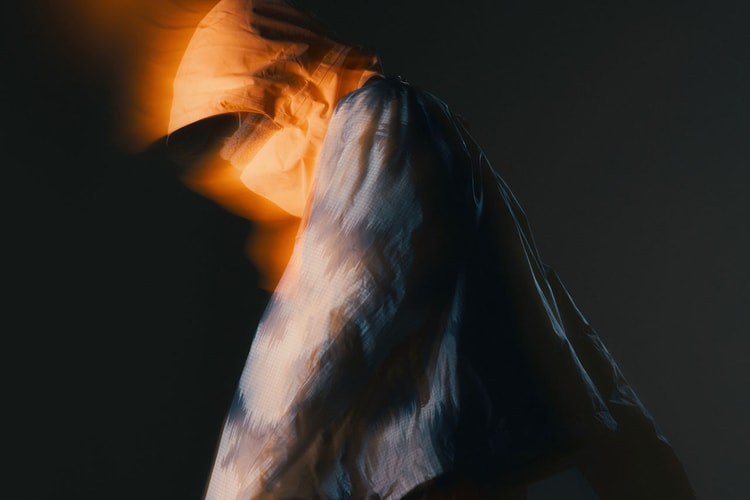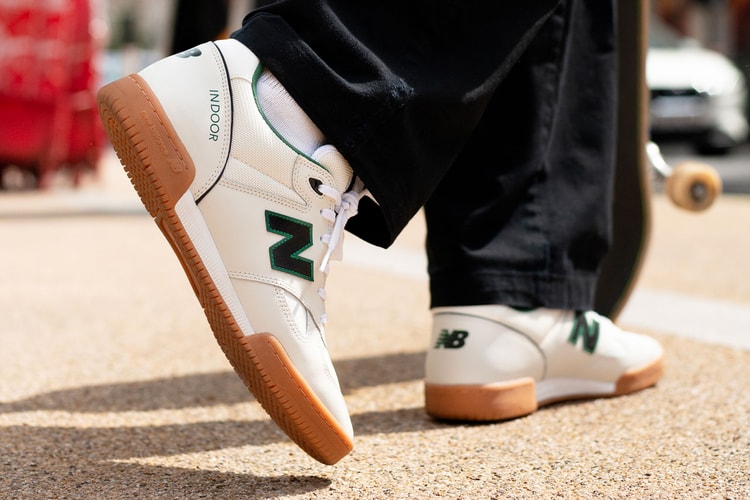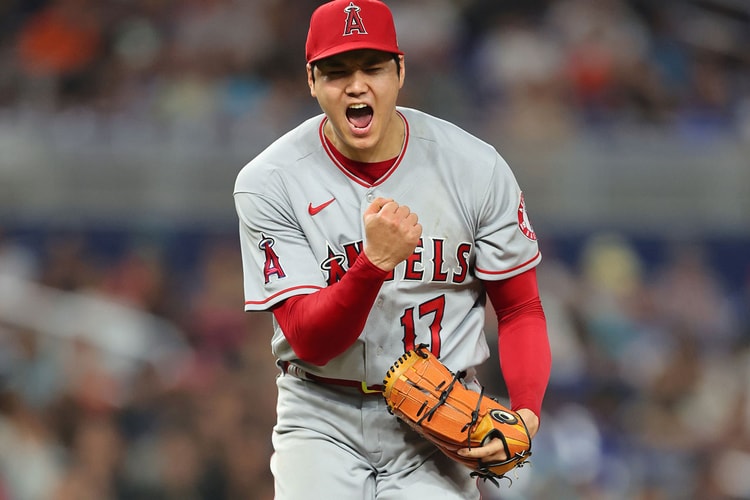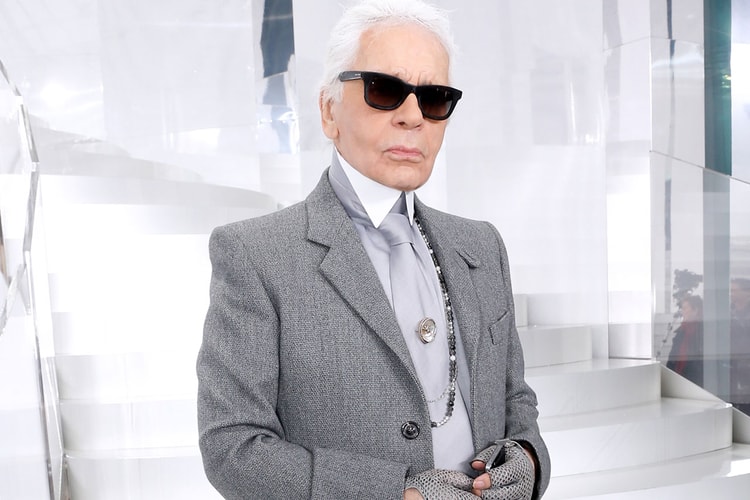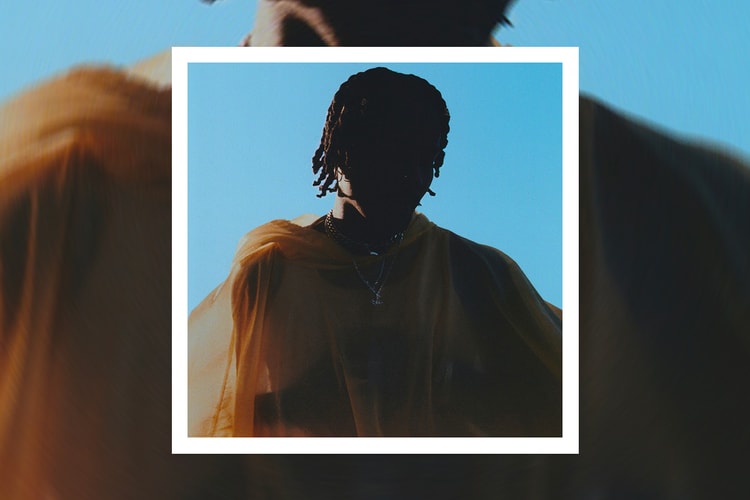BLUE BLUE JAPAN Breaks Down Its First-Ever Sportswear Collaboration With PUMA in Exclusive Interview
In an era when collaboration is becoming increasingly common, what makes PUMA’s partnership with a traditional Japanese craft brand so notable?




When it comes Japanese fashion, a series of styles that evolved from traditional Japanese dress culture have recently emerged as some of the region’s most representative elements. Indigo dye, rags and sashiko have all developed into distinct and specific references for current trends. Top on the list of iconic brands in this category is BLUE BLUE JAPAN, which was established in 1996.
As the apparel brand launched by Seilin and Co., BLUE BLUE JAPAN has set its tone from the very beginning, inspired by traditional Japanese culture, and in a more subtle way, indigo dyeing which has become the foundation of the brand. For more than 20 years, the brand has been using the traditional pure indigo dye technique (natural plant dyeing) — with a long history, the production of indigo dye is a lengthy process that involves chopping, drying and fermenting polygonum harvested from plants to create an indigo dye solution that can be used in fabrics. This technique, infused with time, has been given an even heavier traditional undertone.
Since its establishment in 1996, BLUE BLUE JAPAN, with its distinctive elements of traditional Japanese culture, has made its first step towards a cross-over partnership – BLUE BLUE JAPAN and PUMA successfully collaborated at a time when the sports brand is commemorating the 50th anniversary of the introduction of its iconic Clyde model and the 75th anniversary of its inception.
Even while co-branding and cross-border partnerships are becoming more common, the collaboration between the two is still an unexpected link-up. Hypebeast invited the BLUE BLUE JAPAN crew to discuss the background and details behind the creation of the collection, as well as a set of topics related to the brand.
HYPEBEAST: There are many consumers in China who are new to Blue Blue Japan. Can you introduce the brand to Chinese consumers?
BLUE BLUE JAPAN: BLUE BLUE JAPAN is one of Seilin and Co.’s original brands, with its flagship store located at OKURA in Daikanyama, Tokyo. “Handmade,” “Indigo dyeing,” and “A sense of warmth” have been the cornerstones of BLUE BLUE JAPAN since its founding. We dedicate ourselves to making comfortable clothing and other life-oriented items that people will love for a long time in their lives. As the brand name BLUE BLUE JAPAN suggests, we are committed to “MADE IN JAPAN” production and employ traditional Japanese processes and techniques including pure indigo dyeing and other natural dyes.
HB: BLUE BLUE JAPAN has used Pure Indigo Dye from its start. What distinguishes this traditional dyeing procedure from modern techniques?
BLUE BLUE JAPAN: Pure Indigo Dye is an organic dyeing procedure that uses SUKUMO, a Japanese plant leaf. From planting SUKUMO to dying clothes with it, the entire process is time-consuming, difficult, expensive, and nearly entirely manual. However, it is because of this high-maintenance process that we are able to produce such a distinctive indigo color.
HB: In this era of speed, buzz and high visibility, BLUE BLUE JAPAN’s craftsmanship is becoming increasingly valuable; what motivates you to keep to your heritage so steadfastly?
BLUE BLUE JAPAN: The motto of our organization, “To provide impressive craftsmanship and services that give people pleasure and enjoyment,” it encapsulates everything.
Create long-lasting “basic” items and have fun as the indigo dye slowly fades.
HB: The mood that the company seeks to portray via wearing indigo dye apparel focuses on life and sensual delights. How is such a notion portrayed in a tangible form throughout the real design process, such as the detailed component of the clothing?
BLUE BLUE JAPAN: As we mentioned in our brand introduction, we bring a unique warmth through handmade manufacturing. In addition, we focus on making comfortable garments with some practical details, and we are committed to creating long-lasting ‘basics’ items and having fun as the indigo dye slowly fades.
HB: While looking through previous interviews with the brand, I came across an interesting thing where a small bell is attached to each piece of BLUE BLUE JAPAN’s clothing so that the sound of the bell can be heard when one wears the brand’s pieces. What was the reasoning behind this?
BLUE BLUE JAPAN: This is because we want to engage more of the consumer’s senses to enjoy the garment.
HB: BLUE BLUE JAPAN’s brand concept symbolizes a clear reference to traditional Japanese culture, while PUMA represents the trendy athletic DNA. As one of the co-branding parties, can you share how the two brands first came together and ultimately decided to work together?
BLUE BLUE JAPAN: While we were searching for a turning point for the brand, PUMA unexpectedly offered us the chance to collaborate with them as they celebrated their 75th birthday and the 50th anniversary of PUMA Clyde. This fortuitous match led to our partnership.
HB: Cross-border collaboration appears to be growing increasingly common in this era. However, in terms of BLUE BLUE JAPAN’s previous partnerships, the brand has never collaborated with a sports brand, so what led you to take this step this time?
BLUE BLUE JAPAN: We were preparing for a new phase of the brand when the opportunity to partner with PUMA presented itself. PUMA, much to our surprise, recognized our attitude and craftsmanship so well that we were able to proceed with the project.
HB: To some degree, the different identities of the co-branded partners may determine the creative way of thinking/perspective; how did you consider this collaboration with PUMA during the planning stage of the collection and what is the core of it?
BLUE BLUE JAPAN: Given the importance of our partnership with PUMA, we sought to combine the quality and technology of “MADE IN JAPAN,” which is a characteristic of the BLUE BLUE JAPAN brand, with PUMA’s philosophy and technology as an internationally renowned sports brand.
HB: As a sports brand with a lengthy history, PUMA has an extensive archive to pick from. The shoes in this collaboration are based on the Clyde and the Army Trainer – why were these two pairs of shoes chosen? Can you tell us about the design and functionality that went into the creation of these two pairs of shoes?
BLUE BLUE JAPAN: The Clyde was chosen since it is the 50th anniversary of this model this year, and we focus on classic “MADE IN JAPAN” items that are mono-color friendly and for a basic and clean style. The upper features a waxy recycled suede and looks simple and clean. Our signature SHIBORI (Japanese tie-dye) pattern appears on the shoes’ lining.
As for the Army Trainer, we chose this shoe because we wanted to add a clean white piece to the collection. The silhouette is completely pure and clean, with a molded toe cap and GORE-TEX lining and natural leather, and the footbed is also adorned with a KIRIE-SAKURA (cherry blossom silhouette) pattern.
HB: At the creative level, the indigo-dyed clothes craft is the brand’s distinctive design language. How is the craft of indigo dyeing presented on the items from this collection?
BLUE BLUE JAPAN: The craftsmanship is delivered by our original blue-dyed nylon satin fabric, which can be utilized in pieces such as shirts and dresses. Its use of traditional Japanese tie-dye processes is very iconic.
Create textured timeless pieces that are inspired by ordinary life.
HB: Regardless of the form of co-branding, both parties are seeking a 1+1>2 impact and establishing a shared concept. In the process of creating this collection, what do you believe are the most mutually resonant features shared between BLUE BLUE JAPAN and PUMA?
BLUE BLUE JAPAN: Creating textured timeless pieces that are inspired by ordinary life is our common aspiration.
HB: Do you have any unique sentiments about this collection as the brand’s first-ever collaboration with a sports brand, or any inspiration for future collaborations that you may try?
BLUE BLUE JAPAN: We are motivated by PUMA’s exceptional product development and organizational capabilities, and BLUE BLUE JAPAN looks forward to future collaboration.
Cross-Fields Fusion of Traditional Craftsmanship and Athletic DNA
Creating timeless textured pieces inspired by ordinary life is the key to bringing PUMA and BLUE BLUE JAPAN together. Two brands with distinct brand philosophies from separate areas met by coincidence and found shared commonalities in a two-way exploration. The collaboration centers on PUMA’s 75th anniversary and Clyde’s 50th anniversary.
PUMA’s iconic Clyde maintains the suede material of the original edition. The sports styles and shoes are both treated by a traditional indigo dyeing process. In terms of design detail, the shoe’s interior and laces feature BLUE BLUE JAPAN’s signature shibori patterns, which use diluted sulfuric acid to splash out the color on indigo cloth to create a blue and white pattern. For this joint collection, BLUE BLUE JAPAN has incorporated this traditional technique, which is often used on garments, into the creation of shoes.
Showing respect to nature, the word “ARIGATO” (Japanese “thank you”) has featured on the bottom of every BLUE BLUE JAPAN item in the past. The brand maintains this design approach and concept in a more polished component of the collection, incorporating the phrase “ARIGATO” on the metal lace tips of Clyde.
The Army Trainer is another archive shoe in the collection, a classic German army trainer style. This iteration delivers a classic white and gray colorway, with the addition of GORE-TEX materials for an outdoor feel. The retro and minimalist look of the shoe, paired with utilitarian and tactile materials, elevates its texture.
The BLUE BLUE JAPAN design crew draws inspiration from the seasons, Japanese clothing patterns and fabrics for its own collections. Classic silhouettes and textiles are merged with PUMA’s sportswear DNA in this collection. “MADE IN JAPAN,” the collaboration presents a combination of heritage and modernity.
The collection is distinguished by Blue Blue Japan’s traditional garment craftsmanship and blue dye coloring and by PUMA’s sporty functional considerations, such as the drawstring closure at the leg of the pants and the zipper design of the collar. These details, along with handmade Pure Indigo dyeing and a series of traditional techniques, elegantly demonstrate the cross-over references between BLUE BLUE JAPAN and PUMA and each brand’s respective identities, fused together in mutual understanding.
The brand ethos, “Landscape,” is integral to BLUE BLUE JAPAN, symbolizing the many landscapes generated by distinct natural ecosystems, time and humans. The indigo dyeing technique is born from these interactions.
As the first sports brand to collaborate with BLUE BLUE JAPAN since its founding, PUMA has expanded the boundaries of sports culture with diverse concepts and forms. Under PUMA’s notion of diverse coexistence, every style ushers in a starting point for creative aesthetics.
The PUMA x BLUE BLUE JAPAN Collection will be available starting December 9th at select online and offline retailers.





























